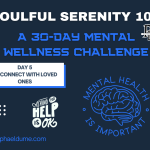In our fast-paced, modern world, striking a balance between work and personal life has become increasingly challenging. With the rise of remote work and the blurring of boundaries between professional and personal life, it’s more important than ever to consciously maintain a healthy work-life relationship balance. In this article, we will explore the significance of this balance, the challenges it poses, and practical strategies to achieve it.
The Significance of Work-Life Balance
Work-life balance is a concept that refers to the equilibrium between the demands of your professional life and the pursuits of your personal life. Achieving this balance is crucial for several reasons:
1. Improved Physical and Mental Well-being
A healthy work-life balance reduces stress levels and minimizes the risk of burnout. Overworking can lead to physical health issues, such as cardiovascular problems, and mental health concerns, including anxiety and depression. By prioritizing personal time, you can better care for your physical and mental well-being.
2. Enhanced Productivity
Contrary to popular belief, working longer hours does not necessarily equate to higher productivity. In fact, overworking can lead to diminishing returns as fatigue sets in. When you have a balanced work-life relationship, you are more likely to be productive during your working hours and perform at your best.
3. Stronger Relationships
Neglecting personal relationships due to work commitments can strain your connections with family and friends. A healthy work-life balance allows you to nurture and maintain these important relationships, leading to a more fulfilling personal life.
4. Increased Job Satisfaction
Achieving a balance between work and personal life contributes to job satisfaction. When you have time for your hobbies, interests, and relaxation, you are more likely to find joy and fulfillment in your professional life as well.
5. Long-term Career Success
While dedicating time to your career is important, an excessive focus on work at the expense of personal life can hinder long-term success. Burnout and stress can lead to decreased job performance and even career setbacks. Maintaining a healthy work-life relationship balance is essential for sustained career growth.
Challenges to Work-Life Balance
Despite the clear benefits, numerous challenges can hinder individuals from achieving a healthy work-life balance. Recognizing these challenges is the first step toward addressing them effectively:
1. Technology and Remote Work
Advances in technology have made it easier to work remotely, but this has also blurred the boundaries between work and personal life. Constant access to work emails and digital communication tools can make it difficult to disconnect and switch off from work.
2. High Expectations and Pressure
Many workplaces have high expectations and pressure to meet demanding deadlines. This can lead to a culture of overworking and neglecting personal time.
3. Guilt and Fear
Some individuals may feel guilty or fear negative consequences if they prioritize personal time over work commitments. This fear can lead to overworking and neglecting personal needs.
4. Lack of Boundaries
Without clear boundaries between work and personal life, it’s easy to let one spill into the other. This lack of separation can make it challenging to maintain a balance.
5. Ambition and Career Goals
Ambitious individuals may struggle to find a balance between their career aspirations and personal life. They might prioritize career advancement at the expense of personal time and relationships.
Practical Strategies for Maintaining Work-Life Balance
Achieving a healthy work-life relationship balance requires a conscious effort and the implementation of practical strategies. Here are some effective ways to strike that balance:
1. Set Clear Boundaries
Establishing clear boundaries between work and personal life is essential. Define your work hours and stick to them as closely as possible. Communicate these boundaries with your colleagues and supervisors to ensure they respect your personal time.
2. Prioritize Self-Care
Make self-care a priority in your daily routine. This includes getting enough sleep, eating well, exercising regularly, and managing stress. When you take care of your physical and mental health, you are better equipped to handle the demands of both work and personal life.
3. Plan and Schedule
Effective planning and scheduling can help you allocate time for work and personal activities. Use tools like calendars and to-do lists to organize your day and week. Be sure to include personal time and activities in your schedule, just as you would with work-related tasks.
4. Learn to Say No
It’s important to recognize your limitations and not overcommit to work or personal obligations. Learning to say no when you have reached your capacity is crucial for maintaining balance.
5. Disconnect from Technology
Set specific times to disconnect from work-related technology, such as emails and messaging apps. During your personal time, avoid the temptation to check work-related messages or engage in work tasks unless it’s absolutely necessary.
6. Delegate and Seek Support
At work, delegate tasks when possible and seek support from colleagues or supervisors. In your personal life, don’t hesitate to ask for help or delegate responsibilities to family members or friends.
7. Pursue Hobbies and Interests
Make time for activities and hobbies that bring you joy and fulfillment. Whether it’s reading, painting, playing sports, or gardening, engaging in your interests outside of work can help you relax and recharge.
8. Communicate with Your Employer
If you find that work demands are consistently encroaching on your personal life, consider having an open and honest conversation with your employer. Discuss potential solutions, such as adjusting your workload or reevaluating priorities.
9. Take Regular Breaks
During your workday, take short breaks to rest and recharge. Use these breaks to step away from your desk, stretch, or take a walk. Regular breaks can improve your focus and productivity.
10. Reflect and Adjust
Periodically reflect on your work-life balance and make adjustments as needed. Life circumstances and priorities can change, so it’s important to reassess and adapt your strategies accordingly.
Case Study: Achieving Work-Life Balance
To illustrate how these strategies can be applied in real life, let’s consider the case of Sarah, a marketing manager in her early thirties who was struggling to maintain a healthy work-life balance.
Sarah’s Challenge
Sarah’s job was demanding, and she often found herself working late into the evening and over the weekends to meet tight deadlines. Her personal life had taken a back seat, and she was experiencing increasing stress and burnout. She knew she needed to make a change.
Sarah’s Work-Life Balance Plan
- Setting Boundaries: Sarah decided to set clear boundaries for her work hours. She informed her team that she would be available from 9 AM to 5 PM, Monday to Friday, and would not respond to work-related messages or calls outside of these hours.
- Prioritizing Self-Care: Sarah started prioritizing self-care by ensuring she got at least 7-8 hours of sleep, incorporating regular exercise into her routine, and practicing mindfulness meditation to manage stress.
- Planning and Scheduling: She began using a digital calendar to schedule her work tasks and personal activities. This helped her allocate time for her hobbies, such as hiking and painting.
- Learning to Say No: Sarah became more assertive in setting boundaries with colleagues and clients. She learned to say no when additional work was beyond her capacity.
- Disconnecting from Technology: During her personal time, Sarah made a conscious effort to disconnect from work-related technology. She stopped checking emails and messages after work hours.
- Pursuing Hobbies: Sarah rekindled her passion for painting and started taking art classes on weekends. She also joined a hiking group to spend time outdoors and connect with like-minded individuals.
- Reflecting and Adjusting: Sarah regularly reflected on her work-life balance and made adjustments as needed. If she found herself slipping into old habits, she took corrective action.
The Results
Over time, Sarah’s efforts paid off. She experienced reduced stress, improved job satisfaction, and stronger personal relationships. Her newfound work-life balance allowed her to excel in her career while enjoying a fulfilling personal life. Her case serves as a testament to the effectiveness of practical strategies in achieving a healthy work-life relationship balance.
Conclusion
Maintaining a healthy work-life relationship balance is not just a luxury; it is essential for your overall well-being and long-term success. While the challenges are real, they can be overcome with determination and the implementation of practical strategies.
Remember that achieving balance is an ongoing process that requires self-awareness and adaptability. By setting clear boundaries, prioritizing self-care, planning and scheduling effectively, and pursuing your interests outside of work, you can create a life that is both professionally fulfilling and personally satisfying.
In the end, the key to a healthy work-life relationship balance is recognizing that it is not a one-size-fits-all solution. It is a personalized journey that requires you to define what balance means to you and take proactive steps to achieve it. Your well-being and happiness are worth the effort.




